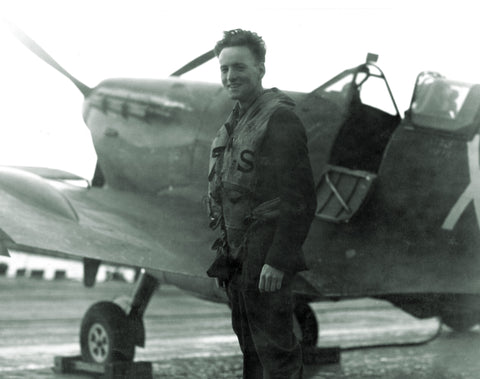
First Time
Royal Air Force pilot J.A. Smith stands next to his Supermarine Spitfire aboard the U.S. Navy’s aircraft carrier USS Wasp in May 1942. If Smith looks relieved, he probably is.
At the time, Wasp was delivering much needed British Spitfires to the beleaguered forces on the island of Malta. One problem: the British pilots who would fly the fighters had never taken off from an aircraft carrier. In fact, one pilot died when he couldn’t get enough power to get into the air and plunged into the Mediterranean.
Smith managed to lift off, but something went wrong with his drop tank and he released it.That meant he no longer had enough fuel to reach Malta and he had never made a carrier landing — nor was his Spitfire equipped with an arresting hook. It appeared the best possible outcome would be a lost airplane and a wet pilot. However, the ship’s captain, John W. Reeves Jr., decided to give Smith a chance to save the Spitfire by having him talked through his landing. In the end, Smith landed successfully.
“He carried out the drill exactly as he had been ordered and obeyed all signals both over the R/T [radio transmit] and from the deck landing officer with commendable coolness,” reported the wing commander. “It is believed this is the first time a Spitfire has ever landed aboard a carrier.” In recognition of his feat, Smith was awarded the title of “Naval Aviator” and given a set of U.S. Navy wings.
The American naval aviator who talked Smith back aboard was the landing signal officer in charge of launching and recovering the aircraft, a young lieutenant named David McCampbell. He who would go on to fly Grumman F6F Hellcats in the Pacific, become the Navy’s leading ace with 34 victories and receive the Medal of Honor. The navy lieutenant who pinned the wings on was actor Douglas Fairbanks Jr., who was serving aboard the carrier.
Smith did not survive the war, being reported missing in action after a mission on Aug. 10, 1942.
historynet magazines
Our 9 best-selling history titles feature in-depth storytelling and iconic imagery to engage and inform on the people, the wars, and the events that shaped America and the world.
